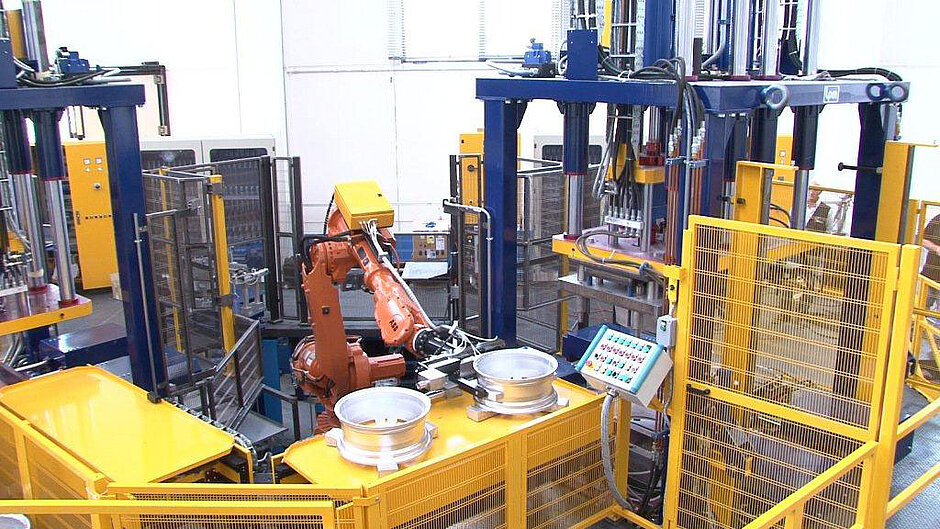In the occasion ANKIROS 2012, LPM intends to present to the specialists of the aluminium foundry sector its own achievements in the field of low pressure die casting under the form of casting samples and audiovisuals. The reason convincing LPM to take part to this important appointment it is the unconditional confidence in the market that for us is not only automotive.
ANKIROS 2012 is therefore an appointment which should coincide with an improved economic situation and already good development perspectives.
In these last years it must be said that LPM has gained a role of leadership at international level that has enable us to work on different technologies for different applications on aluminium casting such as suspension arms, turbocharger bodies that are becoming increasingly popular thanks to the demand for reduced fuel consumption and weight as required by today’s cars.
Hence, the automotive sector is one prevailing portion of LPM activities. We can also mention the aerospace/defence sector for which LPM supplies its own casting technology not only for aluminium but for magnesium too.
A new entrepreneurial spirit that has enabled LPM to gain a well defined position in the market and in the application technologies thus overcoming difficult periods such the one from which we are gradually coming out by suggesting to the potential customers new manufacturing solutions finalised to an improved efficiency of the finished product.
In order to ensure a better understanding of the production LPM by the reader, here following is possible to find a brief introduction to the LP casting process and its numerous advantages.
This casting process is for sure aimed at obtaining an improved casting quality and process repeatability, thanks to the continuous monitoring of the real parameters set on the PLC. As a matter of fact, contrary to gravity, there is no impact on the mechanical properties of the metal, since this remains enclosed in a pressurized vessel, thus vastly reducing both the oxidation and the air inclusions.
In addition to it, the filling, pressurization and solidification phases can be modified during operation according to the casting configuration.
This is made possible by the proportional valve and the relevant pressure compensation which maintain unaltered the preset values for all the duration of the furnace charge.
Also, the several mould cooling options (air, water or mist), timed or thermo regulated, can guarantee a dedicated solidification and a metallurgical quality hardly achievable by the gravity die casting technique.
After casting, the as cast component requires only the removal of a small carrot shaped riser usually located in the central part adjacent to the metal injection point. Very often this sprue can be removed during finish machining.
The low pressure die casting plants lend themselves particularly to the peripheral process automation and this contributes to further improve the process repeatability and consequently the final cast component quality, with our without sand core, with or without heat treatment.
The main features of low pressure die casting can be summarized as follows:
I. It lends itself particularly for the production of castings with axial symmetry;
II. It has an optimum as cast-to-net ratio;
III. It reduces the costs of downstream machining and the relevant number of operations;
IV. The reduced machining contents results in an improved surface finish if compared with what can be achieved in gravity;
V. The process can be easily controlled also from a fluid dynamic standpoint;
VI. The turbulence free feeding entails a reduced formation of porosity if compared to gravity and high pressure die casting;
VII. A compact component can be obtained and, if required, with differentiated solidification areas;
VIII. It is possible to exploit the space normally used for the risers, ingates and to positioning of additional feeding points;
IX. The good surface finish reduces also the frequency of rework operations in respect to the other processes;
X. The tolerances that can be obtained are between 0.3 and 0.6%;
XI. The productivity is not linked to the operator;
XII. It is a “clean” process, that can improve the working environment quality;
XIII. More rational plant layout thus resulting in a reduced space requirement.
also available in <link record:tt_news:12159 internal-link>![]()
![]()
###COMPANY_LINK### <link record:tx_browserdirectory_directory:3025 internal-link>![]() LPM Group - Low Pressure Machines
LPM Group - Low Pressure Machines


